Lighting is a cornerstone of cinematography and video production, shaping the mood, tone, and visual storytelling of a scene. One of the most versatile lighting tools every creator should use is the scrim. In this video, we’ll explore the many uses of scrims, particularly the Scrim Jim Cine System by Westcott, and provide you with the knowledge to enhance your production quality.
What is a Scrim?
A scrim is a versatile tool used in film, television, and photography to modify, block, cut or bounce light. There are different types and sizes of scrims for various applications, whether working with natural light or artificial sources like LEDs or strobes. Since there is a fabric and size to fit any need, a scrim is easily considered one of the most adaptable tools for both photographers and videographers working in a studio or on location.
Key Features of the Scrim Jim Cine System
Westcott’s Scrim Jim Cine System offers a modular design with interchangeable frames and fabrics for precise light control. Available in sizes from 1×1 to 8×8, these scrims can diffuse, bounce, block, and cut light, making them essential for film and commercial sets.
- Modularity: Interchangeable frames and fabrics.
- Variety: Different levels of diffusion, bounce, and cutting fabrics.
- Ease of Use: Lightweight and easy to set up and transport.
Scrim Frame Size Options
Choosing the right scrim frame size is crucial for achieving your desired lighting effect. The Scrim Jim Cine System offers a variety of modular frame sizes to suit different production needs:
- 1×1, 1×2, 1×3, and 2×2 Frames: Ideal for tight spaces and precise light control, perfect for product shots, close-up interviews, or shaping or flagging light in confined areas.
- 4×4 and 4×6 Frames: These sizes offer a balance between portability and coverage, making them versatile for medium shots, interviews, and small group setups.
- 6×6 and 8×8 Frames: Essential for larger sets or outdoor shoots, these frames provide broader light control and coverage, ideal for full-body shots and wide scenes.
Diffusing Light with Scrims
One of the most common uses of a scrim is to diffuse a light source. Diffusing light helps soften hard light, combine multiple lights into a single source, or lower the output of an uncontrollable light source, such as the sun.
Scrims can be used with several different levels of diffusion, from 1/4-stop to 1 1/4-stop, and every fabric affects your subject differently. In the first scene, Jacob sets up a medium shot in the studio to show you how each fabric will soften the light on your subject. He uses a single Westcott L120-B LED boomed overhead in a butterfly position. Without diffusion, the lighting is harsh, with a lot of contrast and sharp shadows. Once he adds the 4×6 scrim you can see how the different fabric affects the shadows and highlights.
Comparing Scrim Diffusion Fabrics
- 1/4-Stop Diffusion: Makes a subtle difference, softening the shadows slightly.
- 3/4-Stop Diffusion: Provides an additional step up in softness.
- Full Stop Diffusion: Significantly enhances the light quality on the subject and spreads it more evenly across the background.
- 1/2-Stop Grid Cloth: Thicker fabric with a slightly warmer profile, spreading the light more evenly than silk.
- 1 1/4-Stop Diffusion: Offers a soft, subtle difference compared to the previous fabrics.
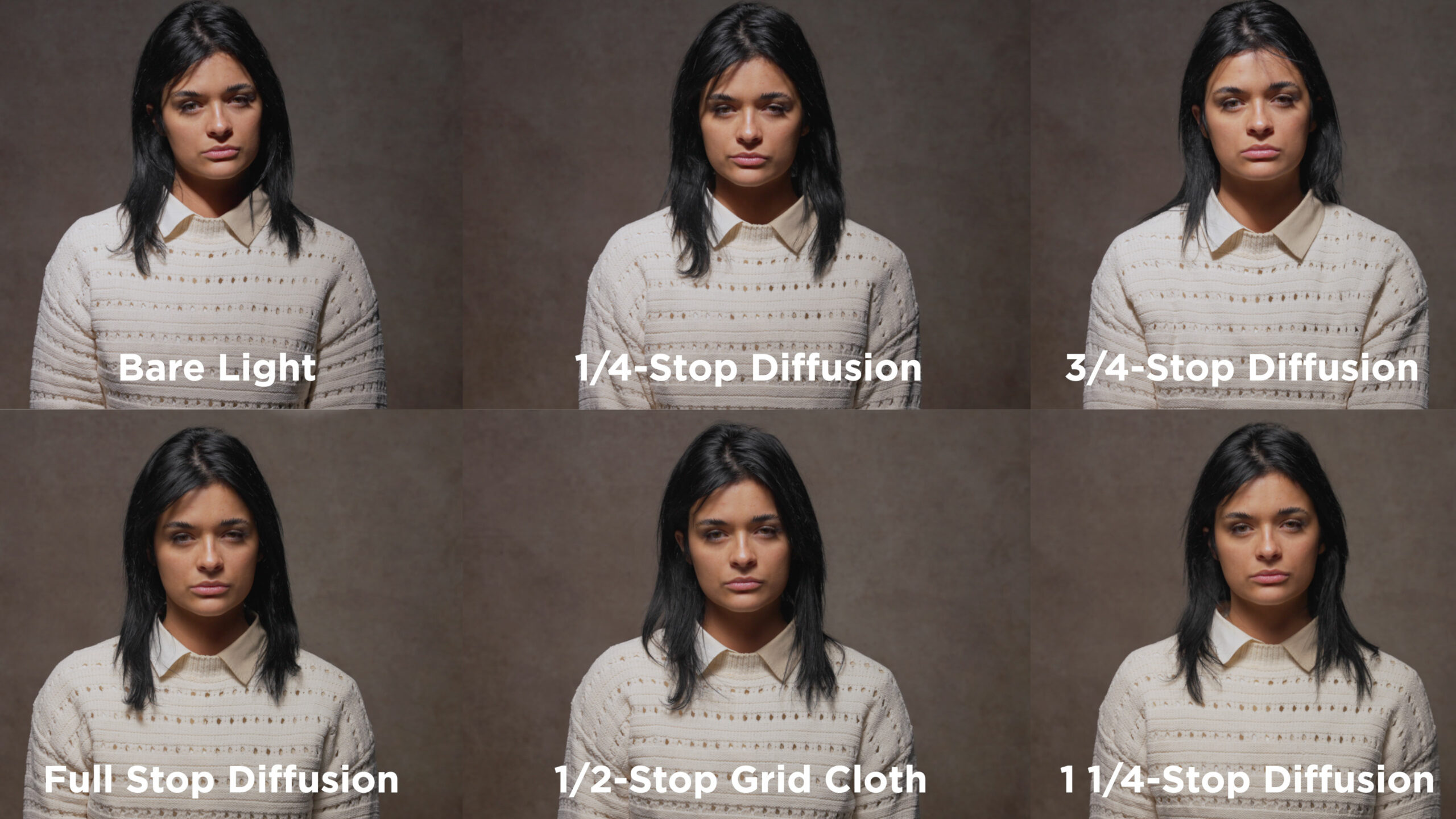
Bouncing Light with Scrims
Bouncing light off a scrim is another great technique to fill shadows and reduce contrast. In the second setup, Jacob places a Rapid Box Octa-S onto the L120-B LED and positions the light to the side of the model, creating a strong shadow on one side of her face. To even out the light, he brought in a Scrim Jim Cine 4×6 frame with feet and added a white bounce fabric. This significantly raised the shadow levels for a more balanced image.
Comparing Scrim Bounce Fabrics
- White Bounce Fabric: The white fabric provides a soft, even fill.
- Silver Bounce Fabric: The silver fabric is slightly brighter and adds more specular highlights to your subject.
- Muslin/Black Fabric: The muslin/black fabric provides a soft fill with a warmer, natural look, excellent for skin tones. The black side is ideal for negative fill, maintaining contrast and shadows, especially in tight environments.
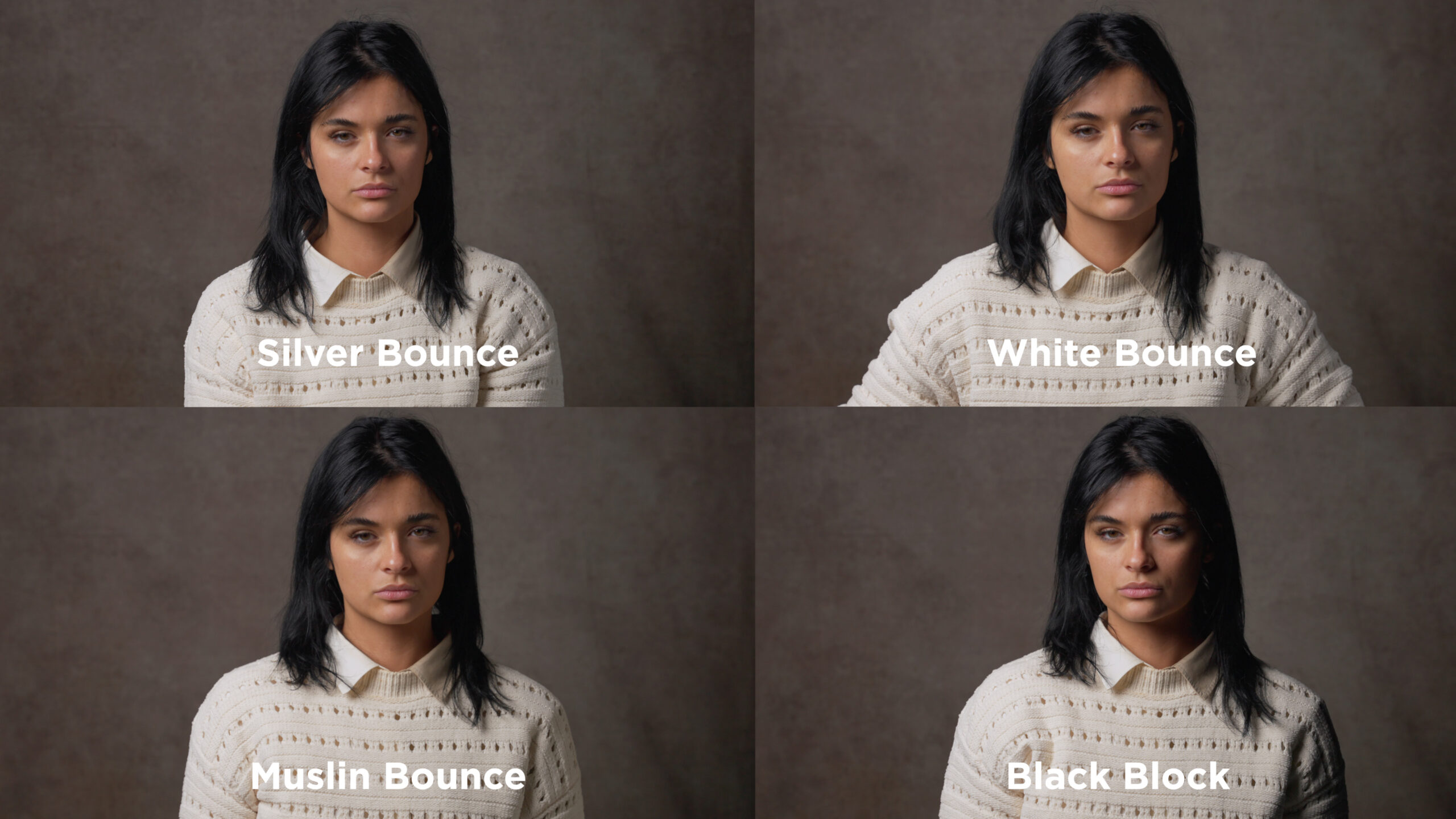
Cutting Light with Nets
Nets are like ND filters for your background, helping to reduce exposure without affecting the light on your subject. In the outdoor setup, we positioned our subject in front of a bright sky, nearly clipping. Adding a 1-stop net improved the balance between the background and the subject. Using a 2-stop net made the subject stand out more, focusing attention on them.
The Scrim Jim Cine system allows you to attach two pieces of fabric, enabling you to double up on nets and further reduce background ambient light. Adding a white bounce to fill the shadows on the subject’s face provided a more even look.

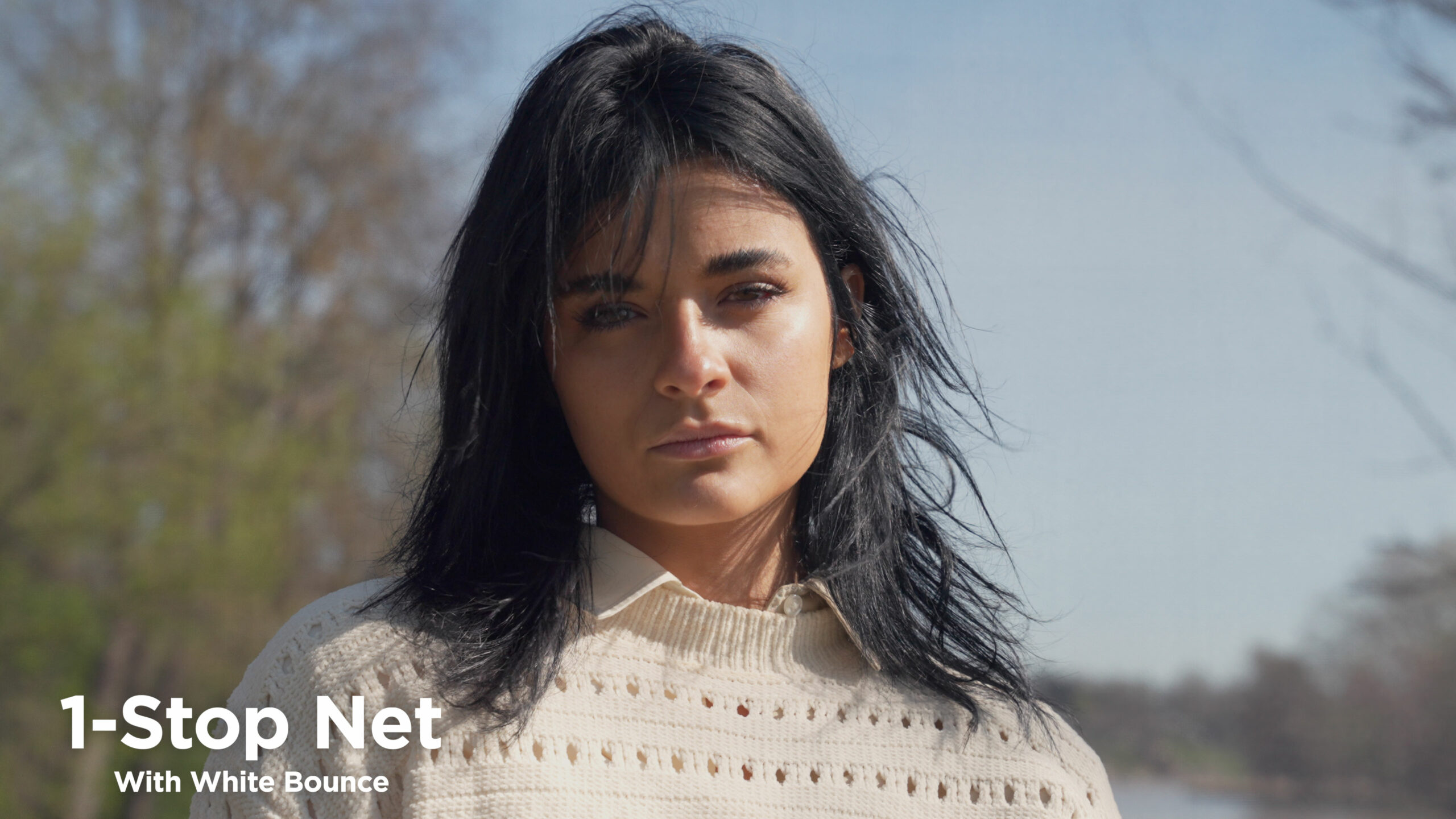
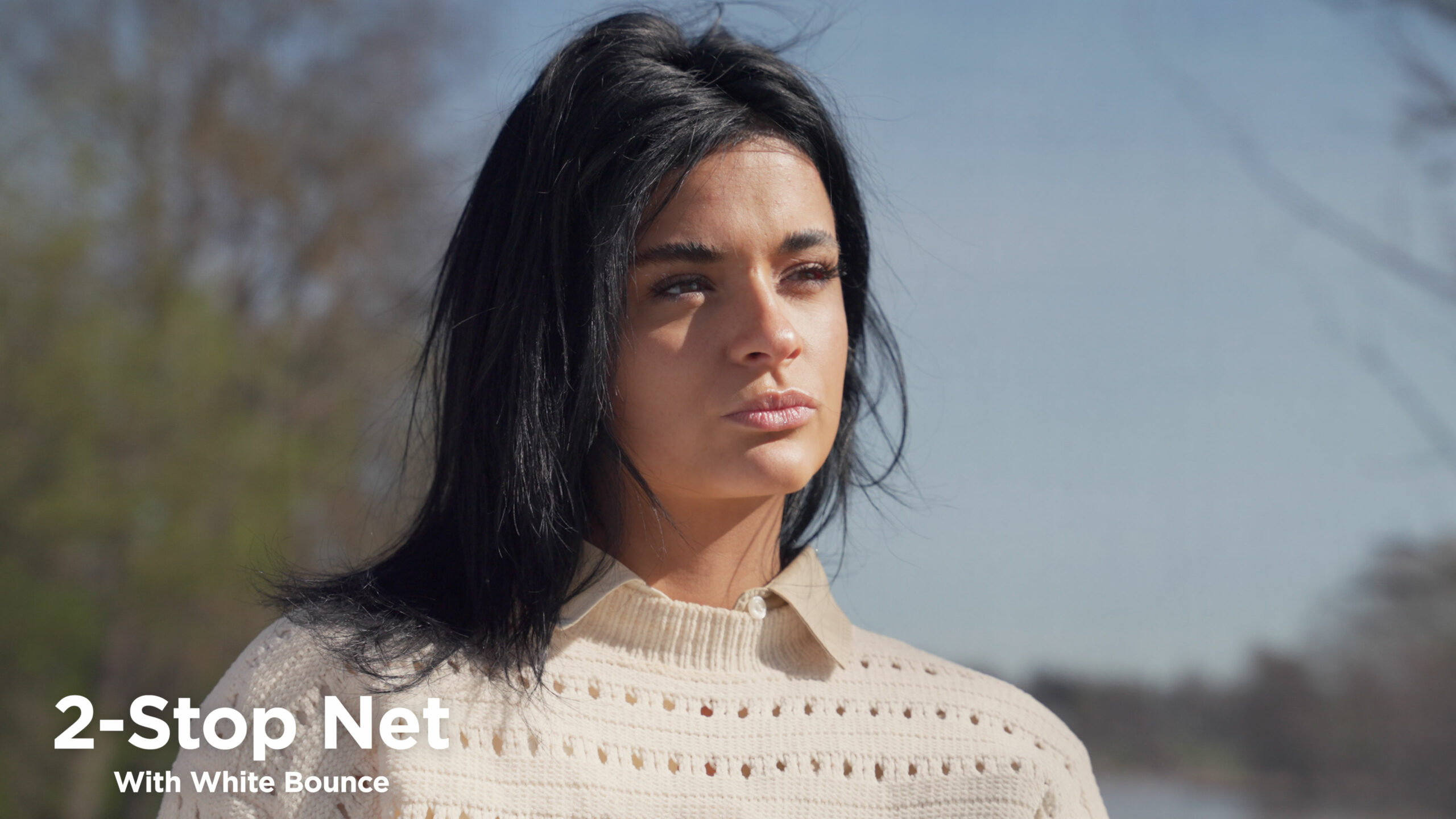
Enhancing Video Production Quality
As you can see, the Scrim Jim Cine System provides versatile control over your lighting, whether you’re diffusing, bouncing, or cutting light. With the right tools, you can enhance your production quality and have full control over your lighting setup.
Tips for Using Scrims Effectively
- Experiment with Different Fabrics: Different diffusion and bounce fabrics offer unique qualities of light. Test various materials to find what works best for your scene.
- Layer Fabrics for Precision: Combining different fabrics on the same frame can give you more control over light intensity and quality.
- Consider Your Environment: Outdoor and indoor settings require different approaches. Use nets to manage bright outdoor conditions and bounce fabrics to fill shadows in tight indoor spaces.
Final Thoughts
Mastering the use of scrims can significantly elevate your cinematography and video production skills. Whether you’re a seasoned professional or just starting, incorporating tools like the Scrim Jim Cine System into your workflow will provide you with the flexibility and control needed to create stunning visual narratives.
Remember, lighting is not just about illuminating your subject—it’s about shaping the story you want to tell. With scrims, you have the power to craft the perfect lighting for every shot.
Happy filming!
For more details on these lighting tools, visit our website to explore the Scrim Jim Cine System or watch our other scrim videos.

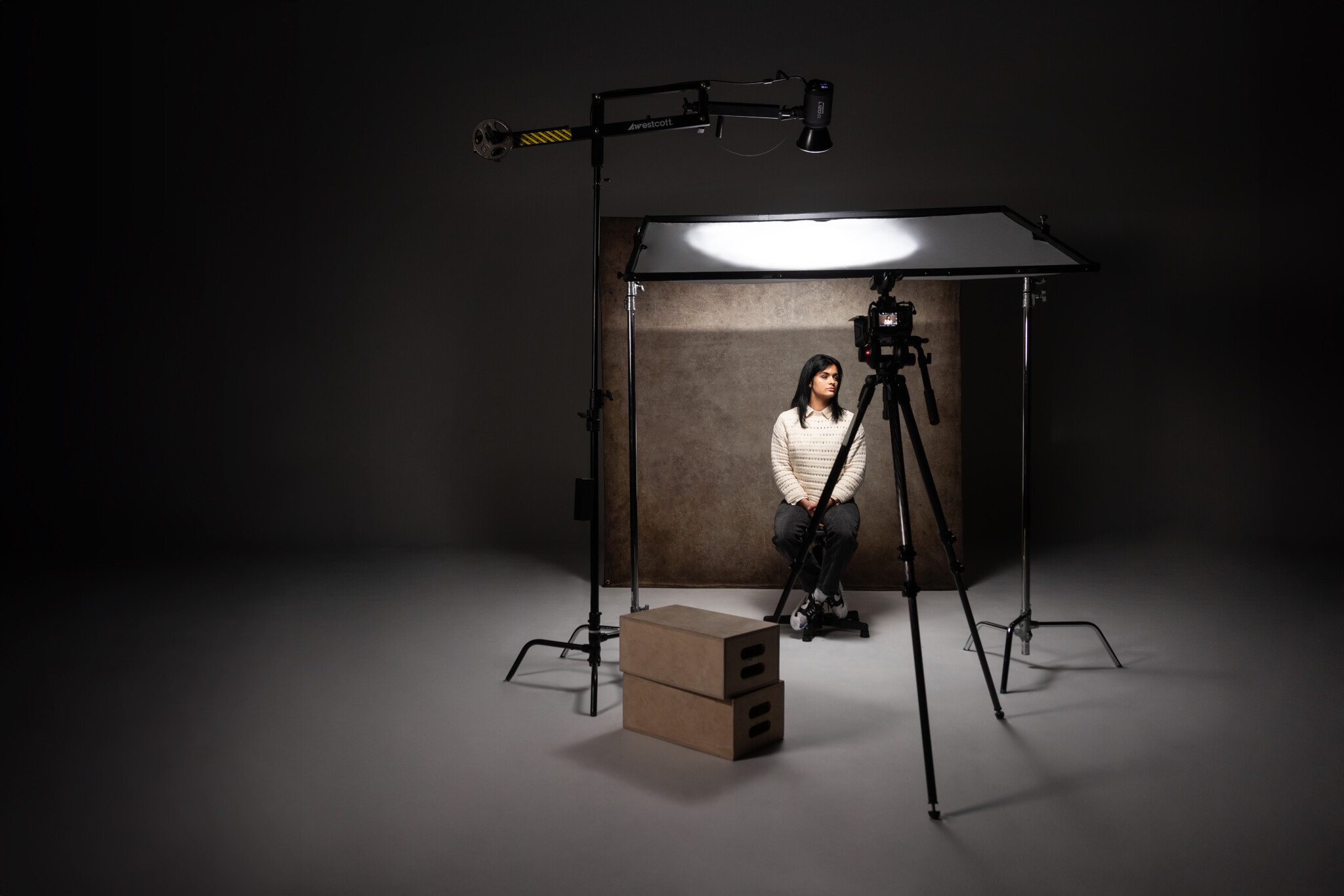





You must be logged in to post a comment.